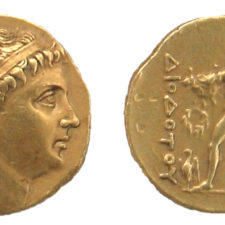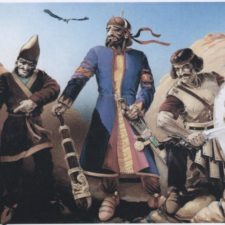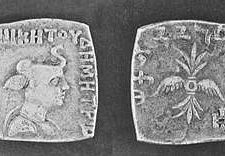The founder of the Persian dynasty Achaemenids king Cyrus conquered farming territory of Central Asia in the 6th century BC. For more than two centuries, the southern part of Central Asia had been divided into satrapies, where Bactria, Sogdiana and Khorezm were central Asian ones. These first ancient states in the territory of modern Uzbekistan were fighting for their independence against the Persians. Only at the end of the 4th century BC, they succeeded. In the same century, the army of Alexander the Great put an end to Persian rule. Death of Alexander the Great led to the fact that Sogdiana passed into the hands of the Seleucids, whose founder was a Greek general Seleucus.
Moreover, despite the continuous development of economic and cultural life, strife led to the fall of the Greco-Bactrian kingdom. In the 2nd century BC Sogdiana and Khorezm, were part of the great Kushan Empire led by Kanishka I. He extended Buddhism throughout the state. In this era, state was developing in all spheres of life, but the most significant achievement is consideredthe appearance of the Great Silk Road. Kushan Empire lasted until Ephthalites destroyed it in 4th century BC.
Middle Ages
In the 6th century after the state of EphthalitesTurkic Khanatewas formed.
During this period, actively developed relations with such countries as China and Byzantium.
The spread of Islam
In the 7th century, Arabs turned their attention to the fertility of the Sogdian lands. In the early 8th century, the governor of Khorasan began to conquer such basic land of Mavarannahr as Samarkand, Bukhara and Khorezm. Thus, at first Omeiad Empire and later Abbasids dynasty ruled the territory of Uzbekistan. Arabic language received a state status. In order not to allow the Arabs to consolidate their power, the caliphate decided to promote the power of the Samanid clan. And at the very beginning of the 10th century Chorasan joined the Samanid possessions. For a century, the centralized feudal state with its capital in Bukhara actively developed in all spheres of life. Only on the eve of the 11th century, Bukhara and Samarkand went into the hands of Karakhanids where they ruled until the early 13th century. However, there were frequent changes in boundaries. Being still a governor of Chorasan at Samanids, Mahmud Ghazni decided to conquerMavarannahr, but he did not success in taking away the power of Karakhanids. Then he decided to move to Khorezm. After defeating Khorezm, he overcame 15 campaigns.
And in 1059 the territory of Ghazni state was owned by the Seljuks. The unstable situation of the Seljuk and Karakhitais played the main point in Khorezmshahs’ hands and soon they influenced Mavarannahr, Khorasan, Herat and Merv. During the reign of Tekesh, Khorezm was among the strongest Asian states. In the first half of the 13th century, Genghis Khan started preparing for an offensive to Mavarannahr. Knowing that the forces are unequal, Khorezmshah Muhammad left the city on his gifted son – DzhalaledinaManguberdi. After the death of Genghis Khan, some territory of Uzbekistan went to his son Chagatai.
The population of the Chagatai ulus (land’s name) suffered from high taxes, which caused frequent uprising that was brutally suppressed. This led to the fact that the Maverannahr was divided into small possessions that were at enmity between themselves. But it did not last long, the great commander Amir Temur united isolated land and subjugated to himself Samarkand, making it the capital of his great power. In addition, he achieved that all the caravan routes laid in the vast of Maverannahr. Thanks to Amir Timur Samarkand’s architecture changed. The best masters of architecture created such wonders as palaces, madrassas, mosques, mausoleums.
Every year the state territory expanded and strengthened the power of the commander. However, after the death of Tamerlane, the state had gone into decline. Timurid Empire has made an invaluable contribution to scientific, poetry, handicraft and cultural development. Start of 16th century was marked by theMuhammad Shaybanikhan’s conquest of Samarkand. For almost a century, Sheibanidsdynasty had seized Khorasan, Mavarannahr, Khorezm, and other lands. After bloody wars among members of Sheibanids, Ashtarkhanids came to power, who divided the state into the Emirate of Bukhara, Kokand Khanate and Khiva.
Recent history
In the second half of the 19th century, the Kokand Khanate was established in Turkestan Governor-General, but Bukhara Emirate and Khiva declared protectorates. With the new government, the agriculture had become a priority sector in the economy of Uzbekistan. The approval of the Soviet regime and the establishment of a Soviet republic of Turkestan marked autumn 1917. Not putting up with this situation, nationalist fought for independence against the Red Army. The first steps of Soviet power was the elimination of illiteracy and opening of educational institutions. A little later, they began to build factories. At the same time, people were suffering from Stalin’s repression. World War II was difficult period for everyone. Tashkent became the center of evacuation. City residents gave shelter to refugees; Uzbek families took for adoption children from all republics.
In 1966, Tashkent began to rebuild after the tragic earthquake.
Independent Uzbekistan
August 31, 1991 will always be the most important day for Uzbekistan’s citizens: at the sixth extraordinary session of the Supreme Council, Uzbekistanwas declared independent. On March 1992, during the UN General Assembly meeting, Uzbekistan was admitted to the organization. More than 180 countries have officially recognized the independence of Uzbekistan. December 8, 1992 was the day of the adoption of the new Constitution. The presidential form of government ensures coordinated activities of public authorities. After independence, the main goal was to build a democratic state with market economy.
Today Uzbekistan is a member of many international authoritative organizations: the Economic Cooperation Organization, European Bank for Reconstruction and Development, the Shanghai Cooperation Organization, the International Monetary Fund, the International Labor Organization. Uzbekistan takes one of the leading positions in all spheres of life among the countries of the Central Asian region.


 (1 votes, average: 4.00 out of 5)
(1 votes, average: 4.00 out of 5)

